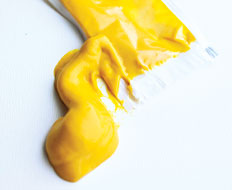Back in the fall of 2007, I took the liberty in this space of calling for quick-serve operators to consider consigning standard-issue, blister-pack condiments to history’s dustbin.
The basis for this potentially unpopular position lay in my belief that while chains of all types had made enormous strides in quality, presentation, and variety over the last 10–15 years, condiments had evolved barely a whit.
Yet, I reasoned, upgrading and varying the selection of condiments could be a cost-effective way for chains to improve products’ health profiles, impart freshness and unique flavors, and enable guests to customize their meals.
Since that column was published, many fast-casual chains—particularly Panera Bread and Au Bon Pain—have continued to tinker with and diversify their condiment offerings to enhance consumer choice, satisfaction, and quality perceptions. By and large, however, quick-serve hamburger, chicken, Mexican, and sandwich chains haven’t followed suit. And in my view, they may be missing a good bet for differentiating their products from often-similar offerings at competing concepts.
Think about it: Today, I can wander into a Burger King and order my Whopper in any number of different permutations—with or without cheese, with or without pickles, extra onions, less lettuce, no bun, double tomatoes. Why, then, should I be limited to the likes of yellow mustard, basic ketchup and relish, and plain old mayonnaise when the stated aim is to allow me to Have It My Way? Suppose My Way is a Whopper with garlic ketchup, spicy chili barbecue sauce, or aioli mustard dressing? Where do I turn?
My hunch is that the creative folks at Burger King could meet me on my turf with a little ingenuity and a relatively minor investment in frozen, chopped herbs (which, in many cases, are virtually indistinguishable from fresh equivalents); some interesting, preprepared fruit and vegetable purées; and a range of dry spices. These elements could be coupled with high-quality base sauces and a carefully crafted set of mix-in recipes and procedures to ensure consistent flavor and quality. Imagine: Hamburger chains could deliver guests a grilled chicken sandwich with a delicious Italian basil and sundried tomato relish, a Korean-style barbecue hamburger, a fried fish portion with a malt vinegar dipping sauce, or a crispy chicken sandwich with roasted garlic hummus.
Salad dressings, too, could be customizable. Why limit the flavor frontiers of guests who might prefer to forgo the basics in favor of a spicy habañero vinaigrette; a smoky ranchero-style ranch; or a tangy, creamy tomatillo-and-green-onion dressing? And when it comes to Mexican fare, is there any reason why one’s choice of burrito or taco sauce should be limited to mild or spicy? How about a cilantro-spiked, poblano-chile-and-guacamole topping, or a spicy queso-style sauce of the sort Qdoba Mexican Grill added to its menu?
In terms of operational complexity, there would almost certainly be hurdles to overcome and wrinkles to iron out; absolutely nothing is easier than tossing your basic ketchup or mustard in a bag and leaving things at that. But at a time when chains are struggling to distinguish their burgers, chicken, and sandwiches from one another, it could pay to be able to say to guests, “What kind of ketchup do you want on that Big Mac?” “Do you prefer screaming-hot jalapeño mayonnaise or a creamy garlic pesto dipping sauce with your fries?” or “Would you like the chicken with Carolina- or St. Louis–style barbecue sauce today?”
Consumers accustomed to the flexibility afforded by Cold Stone Creamery’s generous selection of flavors and mix-ins, the syrup options at their local Starbucks, or the soup, sandwich, and side-dish choices at their local supermarket would almost certainly respond favorably to a more expansive fast food condiment spread.
In a world of endless spreads, schmears, dips, salsas, tapenades, mustards, mayos, chutneys, ketchups, mayos, jams, jellies, compotes, and butters, it would be a shame for quick-serve operators not to continue refining the basic formulas we know and love. It would certainly yield higher-quality, more flavorful and compelling condiments. Doing so is even a great deal easier—and far less expensive—than engineering brand-new products from the ground up. I’d love to think that sometime in 2013, we’ll all look back on the early days of the decade as the beginning of the end for blister packs, and the beginning of a new wave of unprecedented condiment creativity.











